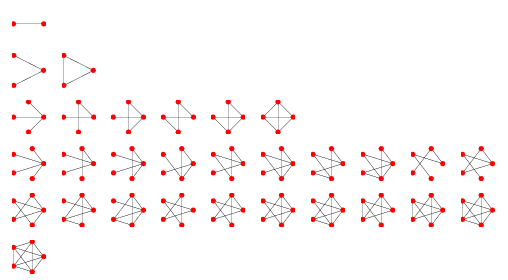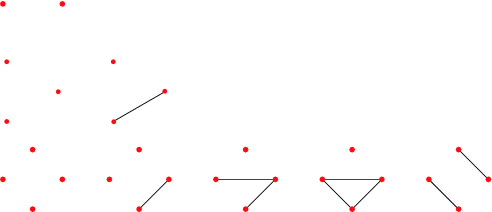Graphs
A graph is a non-linear data structure that can be looked at as a collection of vertices (or nodes) potentially connected by line segments named edges
common terminology:
- Vertex: A vertex, also called a “node”, is a data object that can have zero or more adjacent vertices.
- Edge: An edge is a connection between two nodes.
- Neighbor: The neighbors of a node are its adjacent nodes, i.e., are connected via an edge.
- Degree: The degree of a vertex is the number of edges connected to that vertex
Undirected Graphs:
- An Undirected Graph is a graph where each edge is undirected or bi-directional. This means that the undirected graph does not move in any direction.
Directed Graphs (Digraph)
-
A Directed Graph also called a Digraph is a graph where every edge is directed.
-
Unlike an undirected graph, a Digraph has direction. Each node is directed at another node with a specific requirement of what node should be referenced next.
Complete vs Connected vs Disconnected:
Complete Graphs:
A complete graph is when all nodes are connected to all other nodes.

Connected
A connected graph is graph that has all of vertices/nodes have at least one edge.

Disconnected
A disconnected graph is a graph where some vertices may not have edges.

Acyclic vs Cyclic:
Acyclic Graph
-
An acyclic graph is a directed graph without cycles.
- A cycle is when a node can be traversed through and potentially end up back at itself.
Cyclic Graphs
-
A Cyclic graph is a graph that has cycles.
- A cycle is defined as a path of a positive length that starts and ends at the same vertex.

Depth First
- In a depth first traversal, we approach it a bit different than the way we do when working with a depth first traversal of a tree. Similar to how the breadth-first uses a queue, we are going to use a Stack for our depth-first traversal.
The algorithm for a depth first traversal is as follows:
- Push the root node into the stack
- Start a while loop while the stack is not empty
- Peek at the top node in the stack
- If the top node has unvisited children, mark the top node as visited, and then Push any unvisited children back into the stack.
- If the top node does not have any unvisited children, Pop that node off the stack
- Repeat until the stack is empty.
Real World Uses of Graphs
- GPS and Mapping.
- Driving Directions.
- Social Networks.
- Airline Traffic.
- Netflix uses graphs for suggestions of products.
Resources:
Done by Omar-zoubi